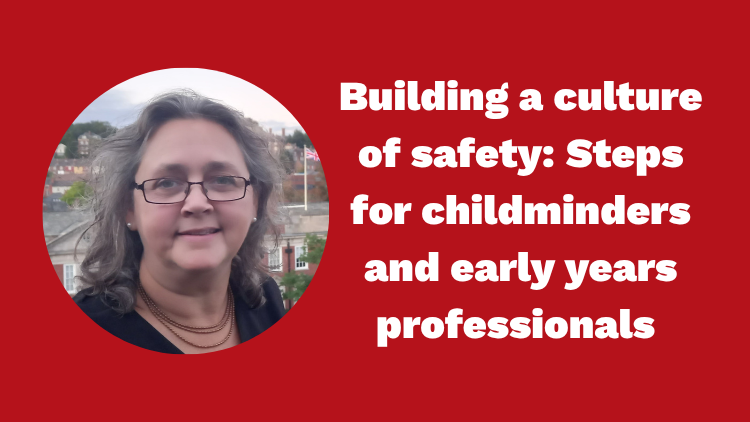Penny Tassoni, PACEY President
Imagine the scene; a potter has been invited into an early years setting. Two children at a time are invited to come and explore the clay. The first pair to come to try out the activity were born within a day of each other. One child hangs back, while the other child immediately starts talking and is keen to touch and mould the clay. It takes around ten minutes before the other child becomes comfortable with the new adult and needs encouragement to touch the clay. The first child quickly loses interest, but the second child spends over an hour and creates an intricate model. For many of us in early years, the difference in the two children’s responses mirrors what we have observed while working with children: no two children, even identical twins are the same.
The intrigue about what makes each of us an individual has been speculated upon for centuries. While nature and nurture remain at the core of this question, advances in a range of disciplines including neuroscience, genetics and psychology have shown us that there is a rich complexity to development. Development is constantly being shaped by the interactions between the biological and the environmental. There is no blueprint or template which means that a child is bound to develop in a certain way although there are many factors that may come together which may set a direction of travel. Here is my smorgasbord of elements that I find particularly interesting.
Maternal stress and anxiety
There are several studies that show that maternal stress and anxiety including during pregnancy can have some influence in early development including early infant temperament. Particularly worth considering is post -natal depression which is very common (around 10-15% of women) but can affect not just attachment but also early language development. One study showed that the children of mothers who had been diagnosed with clinical depression had lower scores of receptive and expressive language in their second year.
Family dynamics
In the same that every child is an individual so too are families. Size of family, birth order and relationships between siblings and in many cases, half siblings and step siblings can all impact on a child’s development, particularly their emotional and social development. Parenting styles also vary and where there is more than one parent, there may be more than one approach. Parents may also have very different relationships with each of their children even if their intent is to treat each one equally. Parents are also affected by their own experiences including those from childhood as well as their cultural and belief systems. Where there are two parents, the dynamics of their relationship can also affect how they parent. Stress on parents which may be caused by external factors such as poverty and discrimination can also affect the dynamics within the family unit.
Gender
Teasing out the biological from the environmental in terms of gender is proving hard for researchers, partly because there are many facets to consider. While the developmental norms are the same for both boys and girls in the early years, there is much evidence to suggest that parents and adults respond and provide different opportunities and levels of interaction according to the gender of the child. A recent study shows how the biological and the environmental often collide. Tracking vocalisations of babies and toddlers over the first two years, researchers found that boys actually produced more vocalisations in the first year than girls although by eighteen months, the number of vocalisations from girls exceeded those of boys. The researchers speculated that in the first year of life, vocalisations from boys were a result of a survival instinct. What is particularly interesting, that throughout the two year period, adults interacted more with girls than boys.
Brain development
Neuroscience is increasingly changing our understanding of children’s development. While there are many myths to be aware of, one feature that is becoming well understood is the way that children’s brains are not only growing, but are constantly being shaped through the interactions, opportunities and emotions that they experience. It is also worth remembering that when we are with children, their responses are also changing us! Of particular note is the way that stress can influence brain development. While some stress is part and parcel of everyday life, it would appear that prolonged stress may affect the healthy development of children’s brains.
So in terms of early years practice what might our increased understanding of the complexity of development mean?
Firstly, it means that one size of provision, curriculum and approach will not suit every child. Our ability to work flexibly and to be able reflect is key if we are to support every child. It also means that we really need to understand each and every child’s story when they come to our provision. Simplistic labelling such as ‘he’s shy’ is not helpful. It is also essential to recognise that each child will have a changing story as a result of growth, experiences and opportunities and that our interactions and planning will need to be adaptive. Finally, post- covid and in a continuing climate of financial inequality, we must not underestimate the impact of stress on families and children.
References and further reading
- Bornstein, M.H., Henry, L. and Manian, N. (2021) ‘Language development in children of clinically depressed mothers in remission: Early experience effects.,’ Developmental Psychology, 57(6), pp. 876–887. https://doi.org/10.1037/dev0001182.
- Oller, D.K. et al. (2023) ‘Sex differences in infant vocalization and the origin of language,’ iScience, 26(6), p. 106884. https://doi.org/10.1016/j.isci.2023.106884.
- Boe, J.L. and Woods, R. (2017) ‘Parents’ influence on Infants’ Gender-Typed toy Preferences,’ Sex Roles, 79(5–6), pp. 358–373.https://doi.org/10.1007/s11199-017-0858-4
- Howard‐Jones, P. (2014) ‘Neuroscience and education: myths and messages,’ Nature Reviews Neuroscience, 15(12), pp. 817–824. https://doi.org/10.1038/nrn3817.
- National Scientific Council on the Developing Child (2014). Excessive Stress Disrupts the Architecture of the Developing Brain: Working Paper No. 3 Centre for the Developing Child, Harvard University https://developingchild.harvard.edu/wp-content/uploads/2005/05/Stress_Disrupts_Architecture_Developing_Brain-1.pdf



